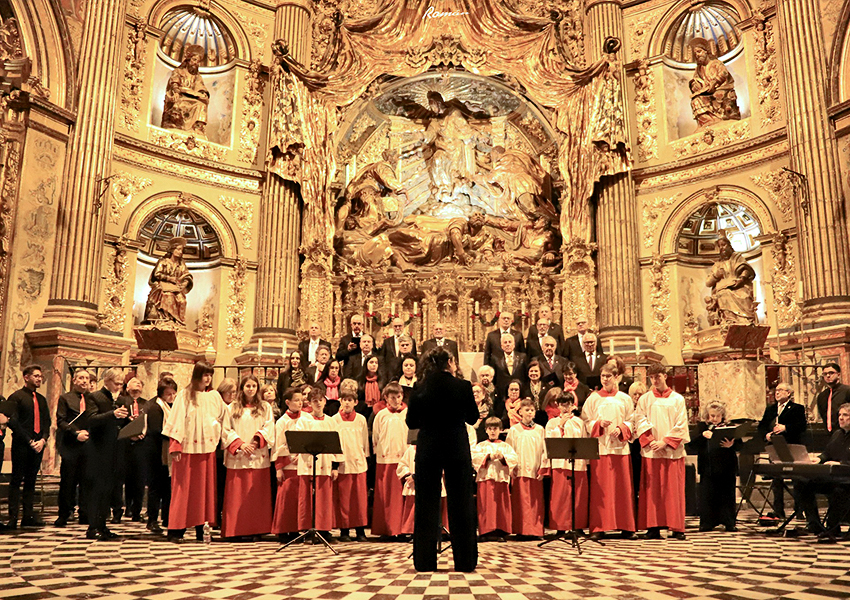The eighteenth-century organ
An organ for a music chapel
From an inventory of the chapel's assets, drawn up in 1634, we know that in the mid-17th century there were two organs: a realejo, acquired in 1632 and placed in the lower choir, and a "large organ with its cannon partitions adorned in its gilded and black wooden case, topped with a coat of arms with two little angels on either side...". The latter was located, like the present one, on the Epistle side and had been commissioned by María de Mendoza to the Granada master Diego de Sanforte. The organ was the centrepiece of a musical chapel which, consisting of an organist and six choirboys, was enlarged by the new statutes of 1568, adding five chaplaincies for a chapel master and four singers with treble, alto, tenor and bass voices. To these should be added an undetermined number of choirboys and minstrels who, not being part of the clergy, were not contemplated in the statutes but who acted together with the singers.
The replacement of the renaissance organ with an eighteenth-century organ
This organ, however, has not come down to us, as in 1790 Baltasara Teresa de los Cobos, 10th Marquise of Camarasa, ordered it to be inspected to decide whether it was worth repairing or whether it was preferable to replace it. All the experts called in more or less agreed that "...".it would be as costly to compose it, or little less than to make it new; on which understanding, and on that of which rather it is indecency than worship to the Divine Majesty to play the organ in the terms in which it is found."It was preferable to replace it.
As a result, in 1795, a new organ was commissioned, located in the same place as the old one, on the Epistle side, next to the choir loft, but of larger dimensions, which meant that a new organ had to be built. enlarge the balcony and to hide part of the polychromy of the cornice, modifications that are still clearly visible. The project was entrusted to one of the organ builders who had inspected the previous one, Francisco Javier Fernándezby contract dated 9 October 1795. The neoclassical box was designed by the architect and academician of Fine Arts, Silvestre Pérez. (1767-1825) in 1798. The new Marquis of Camarasa, Domingo Gayoso de los Cobos, thus sought to avoid academic criticism of the actions of his predecessors.
The restoration of the organ
This organ, which was selectively looted during the civil war, with all its metal elements (iron, lead and tin) removed, and vandalism that destroyed wood and leather, underwent a complete restoration that was completed in 2008. Despite the despoilment, it was possible to execute an accurate reconstructive restoration of both the mechanical system and the sound material.This was based on the analysis of the preserved elements, especially the secrets of the major organ and the cadereta organ, and on a careful and critical reading of the 1795 commissioning contract. The result is that not only was it possible to restore the neoclassical appearance of the instrument, but also to reproduce the eighteenth-century sonority of the original.
The restoration of the organ is boosting the recovery of the musical tradition linked to the chapel of El Salvador, with the appointment of an organist and a chapel mistress responsible for training a choir of six children whose voices rang out again, after years of silence, at Christmas 2008 and continue to do so at weekend masses, an act which, on numerous occasions, is joined on many occasions by the veteran sixes they sang in the 1970s.

